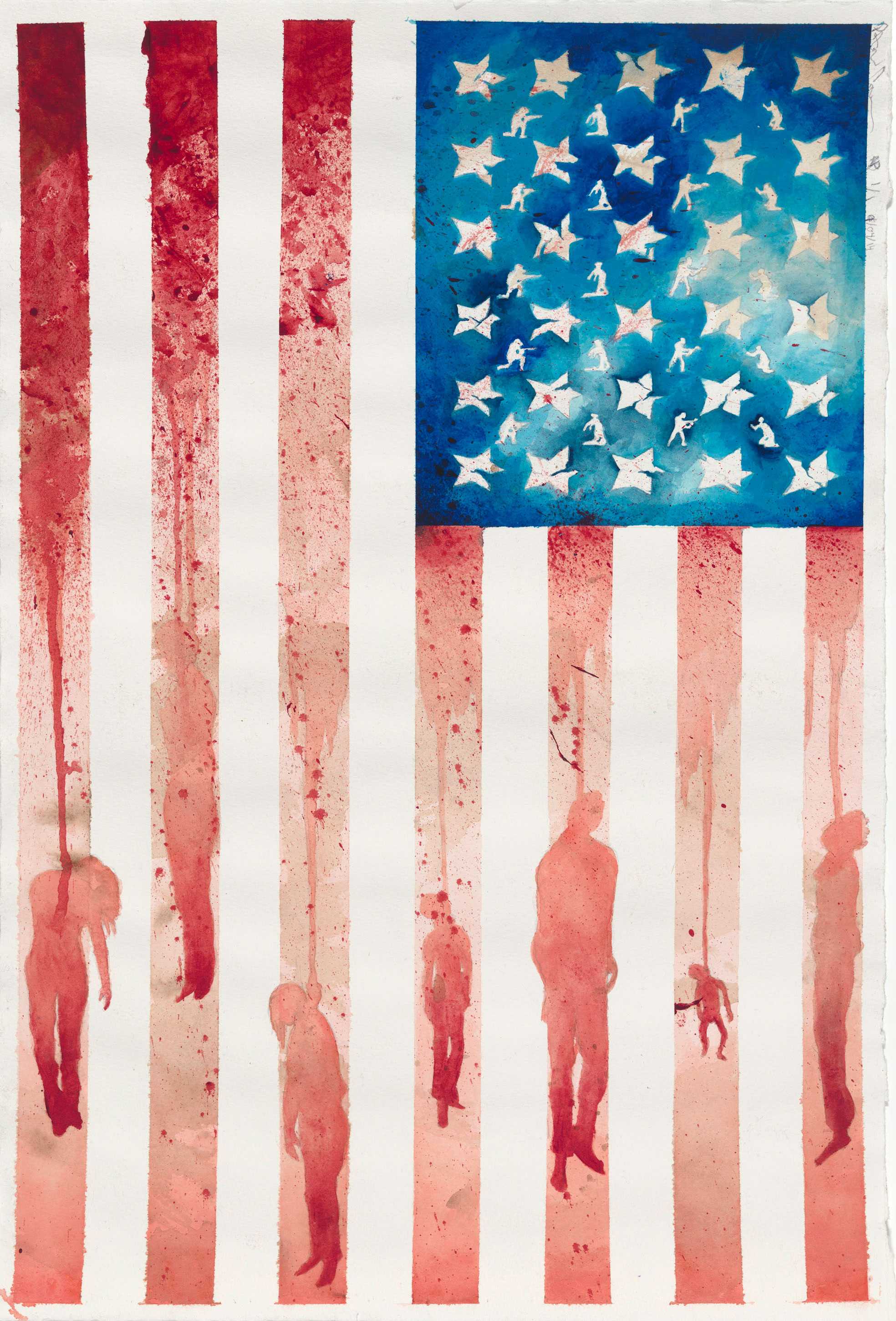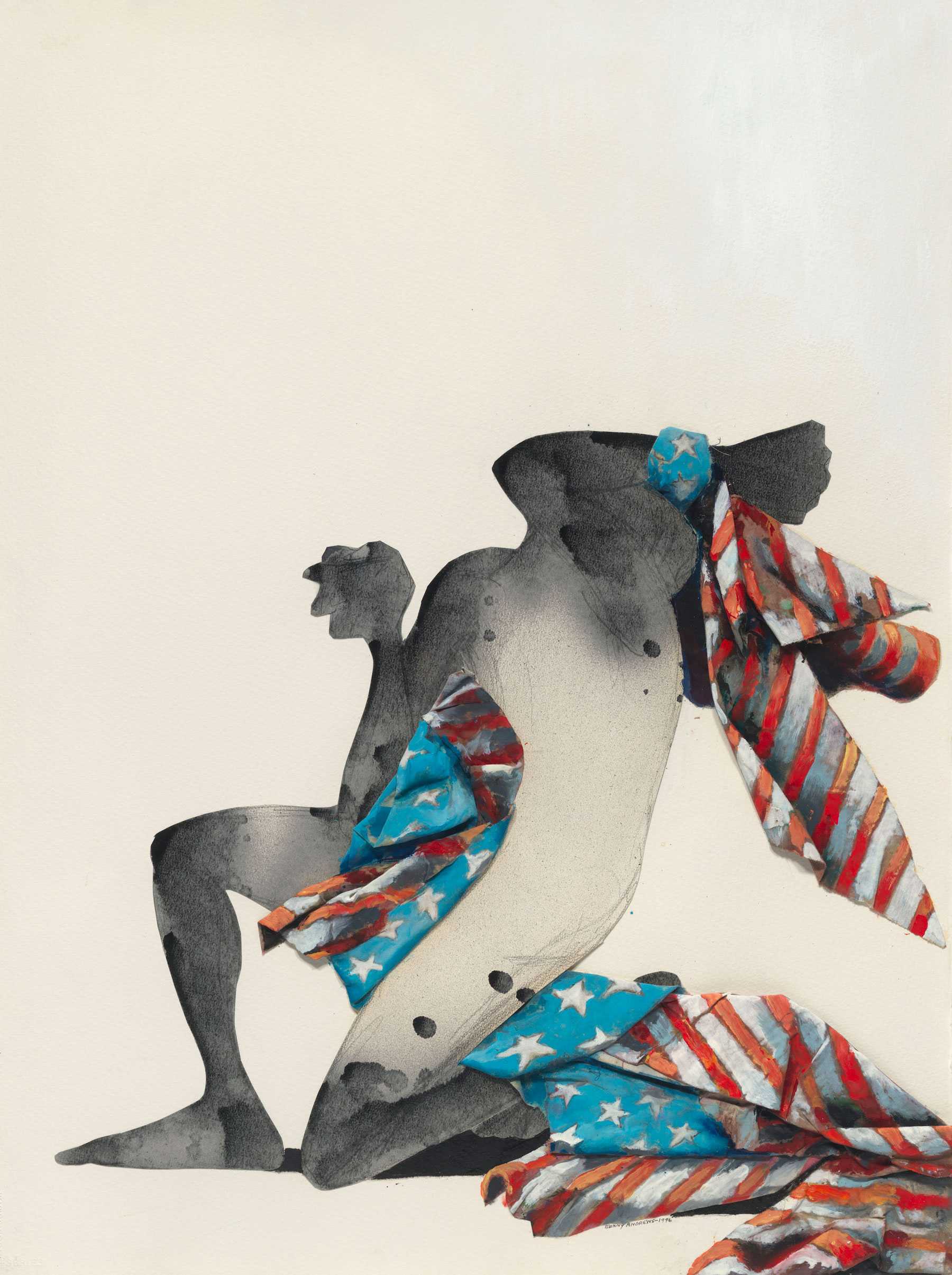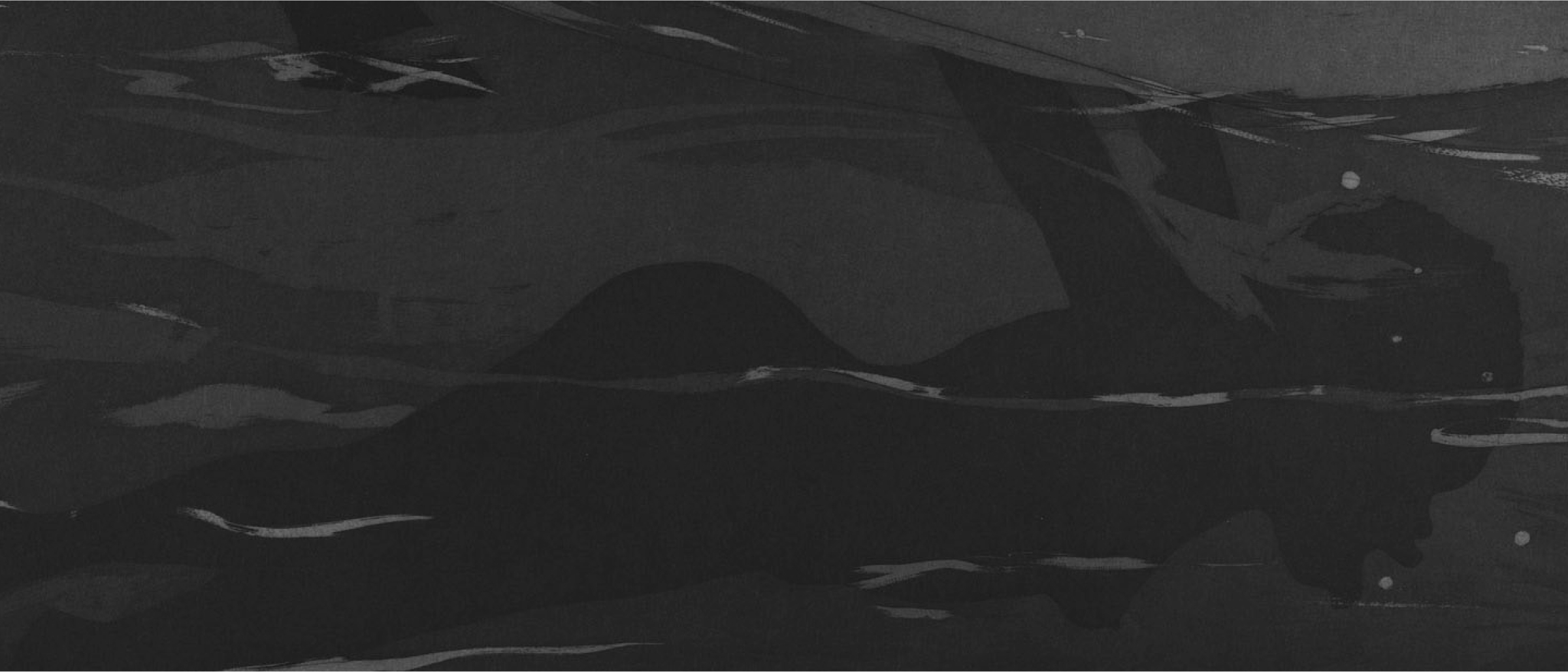
Protest
Protesting social injustice is something that can happen in the streets, but also in artists’ studios. Artists have used their skills to capture feelings of protest for centuries. Some directly document current events through photography, capturing moments that come to define historical events. Others document their protests more abstractly.

When we change the way we see, everything we see will change.
Jermaine Gibbs

Untitled. Tommy Oliver, 2020.


Relationships Between Art and Protest
Sensitive Content
The image includes graphic and violent imagery.

New Age of Slavery. Patrick Campbell, 2014.
From Abolitionism in the 19th century to the Black Arts Movement of the 20th century, to the Black Lives Matter Movement of the 21st century, art has been a central part of protest and social justice movements. Artists have long used historical symbols and contemporary mediums to create images urging change. In the 19th century, widely circulated ceramic medallions showed a kneeling enslaved person asking, “Am I not a man?” and “Am I not a woman?” Today, artists are exploring iconic symbols—like the American flag—to examine the relationships between citizenship and nation.

Spiral. Hank Willis Thomas, 2022.

Featured Constellation
Benny Andrews’s Militant
Benny Andrews’s Militant highlights a kneeling figure. The image of a kneeling Black person has been used to protest injustice since the era of slavery. Kneeling can symbolize many things in art. Sometimes it symbolizes a plea for assistance. At other times it symbolizes a respectful resistance. From the abolitionist movement of the 19th century, to the Black Lives Matter Movement in the 21st century, kneeling has remained a powerful posture.


Diasporic Connections
Black artists have also used art to show unity within the Black Diaspora. In the 1980s, artists like Howardena Pindell and Adger Cowans were struck by the injustice of South African apartheid and used their art as a form of protest.
Separate But Equal: Apartheid. Howardena Pindell, 1987.
SOWETO. Adger Cowans, 1983.

I’m gonna take everything I do about power and desire—and use the tropes of the slave narrative or the slave romance, like the antebellum romance, as the way to talk about these themes, because this is something that clearly won’t go away. It will just keep being an unaddressed bugaboo in American culture.
Kara Walker

Looking at the Past with New Eyes
Many Black artists support contemporary protests, but many have also looked to the protests of the past. In our own time, Kara Walker has used 19th century language and symbols to challenge viewers’ ideas of history, while Roberto Lugo uses classical ceramic forms to portray contemporary Black life. In his series The Life of Toussaint L’Ouverture, first painted in the 1930s and then reimagined as silkscreen prints in the 1980s and 1990s, Jacob Lawrence used bold colors to depict powerful scenes in the history of Haiti and the life of L'Ouverture, the hero of the Haitian Revolution. (For more on this series, see Strongmen: Jacob Lawrence and Lou Stovall.) Whether by interpreting historic events or mastering historical techniques, Black artists explore the past to inform the present.
no world. Kara Walker, 2010.
The Emancipation Approximation (Scene #15). Kara Walker, 2000.

L'Ouverture. Jacob Lawrence, 1986
The Capture. Jacob Lawrence, 1987.


Roberto Lugo's Ghetto Krater
A krater was a ceramic vessel common in ancient Greece, often painted black and orange and featuring images from mythology and history. Ghetto Krater continues this storytelling tradition. In this one krater, he shows different scenes of the violence, including police brutality, that disproportionately affects African Americans in urban communities. Having grown up in Philadelphia’s Kensington neighborhood, Roberto Lugo mines his own past to reflect upon the present.